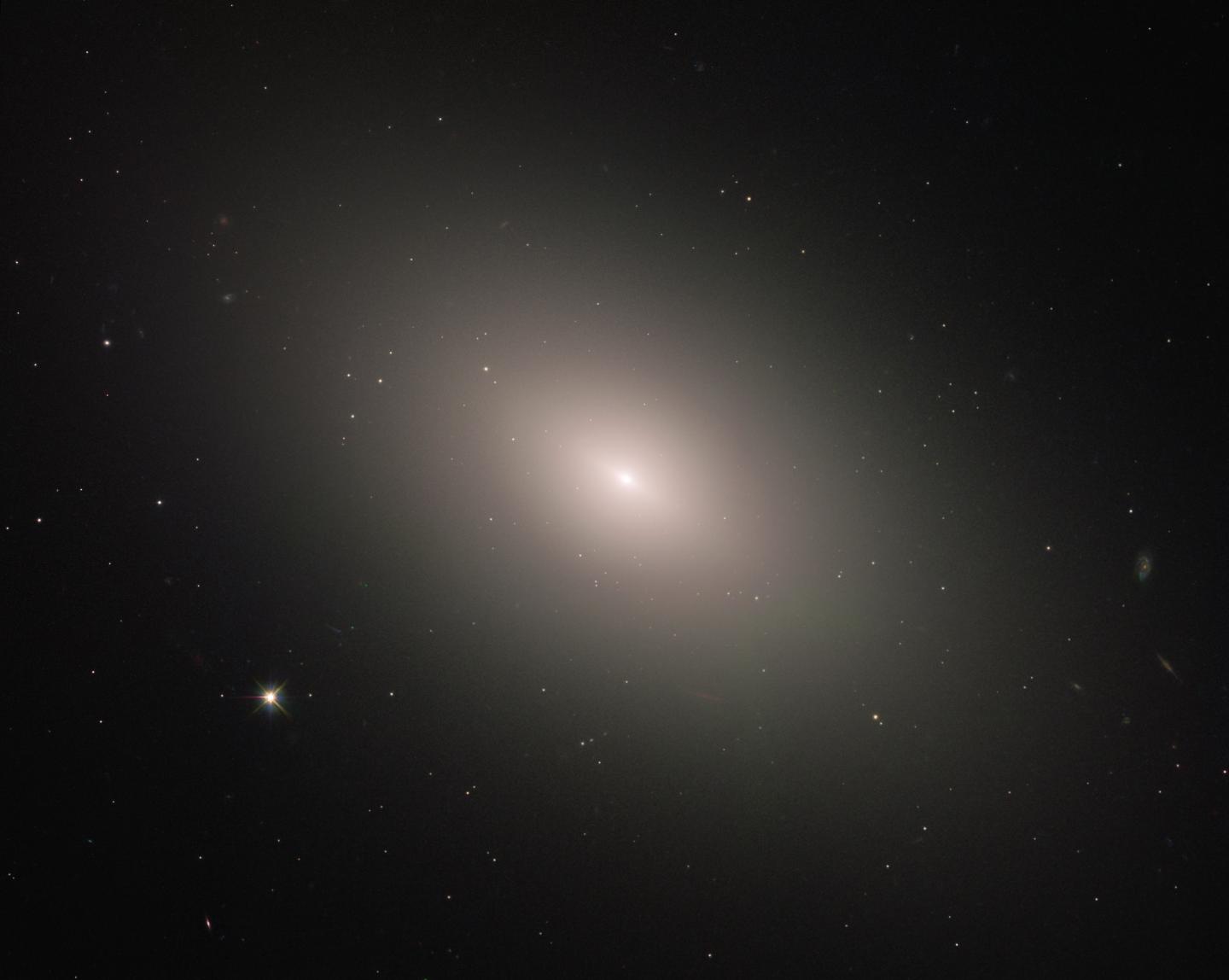
Credit: ESA/Hubble & NASA, P. Cote
This luminous orb is the galaxy NGC 4621, better known as Messier 59. As this latter moniker indicates, the galaxy is listed in the famous catalog of deep-sky objects compiled by French comet-hunter Charles Messier in the 18th century. However, German astronomer Johann Gottfried Koehler is credited with discovering the galaxy just days before Messier added it to his collection in 1779.
Modern observations show that Messier 59 is an elliptical galaxy, one of the three main kinds of galaxies along with spirals and irregulars. Ellipticals tend to be the most evolved of the trio, full of old, red stars and exhibiting little or no new star formation. Messier 59, however, bucks this trend somewhat; the galaxy does show signs of star formation, with some newborn stars residing within a disk near the core.
Located in the 2,000-strong Virgo cluster of galaxies within the constellation of Virgo (the Virgin), Messier 59 lies approximately 50 million light-years away from us. This image was taken by the NASA/ESA Hubble Space Telescope’s Advanced Camera for Surveys.
###
Messier 59 is featured in Hubble’s Messier catalog, which includes some of the most fascinating objects that can be observed from Earth’s Northern Hemisphere. See the NASA-processed image and other Messier objects at: https:/
Text credit: ESA (European Space Agency)
Image credit: ESA/Hubble & NASA, P. Cote
Media Contact
Rob Gutro
[email protected]
Original Source
https:/




